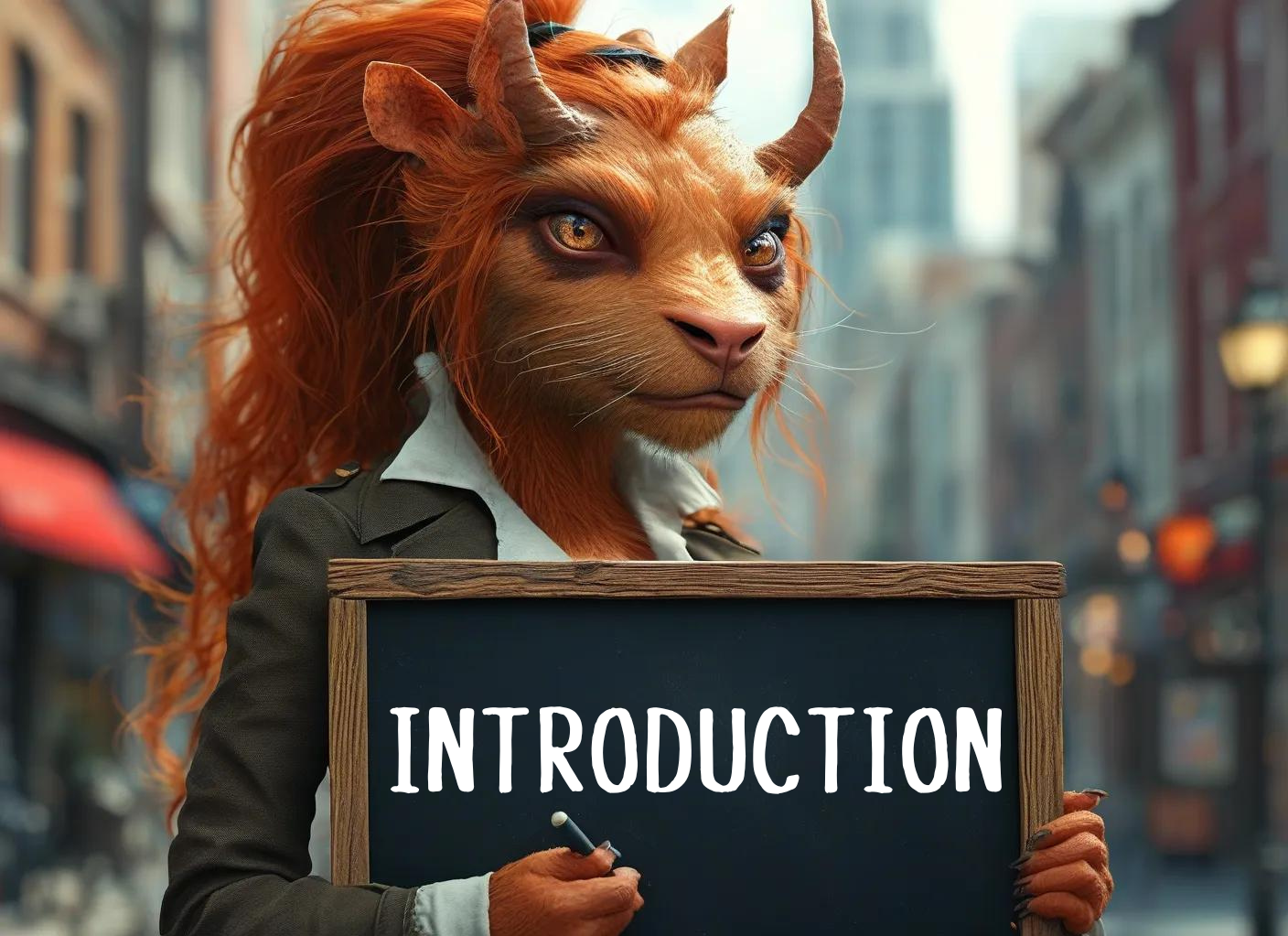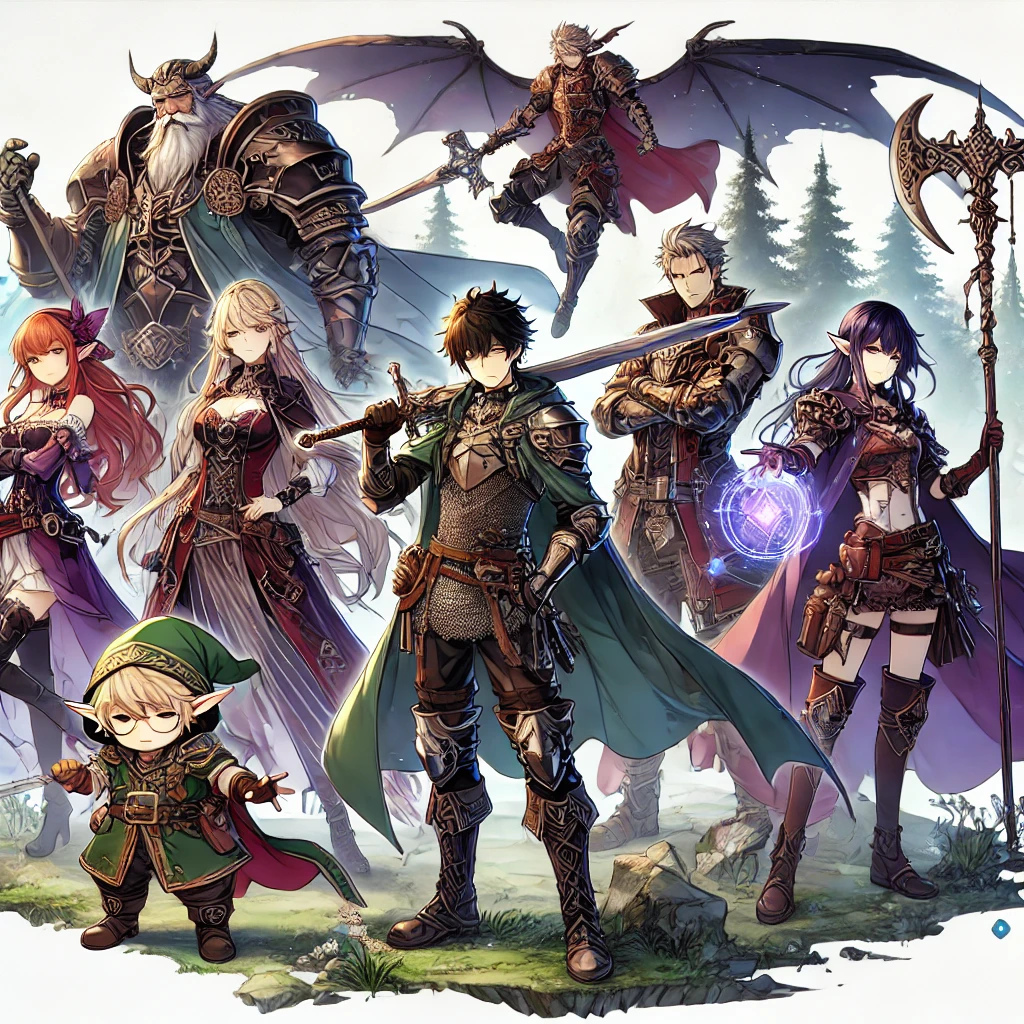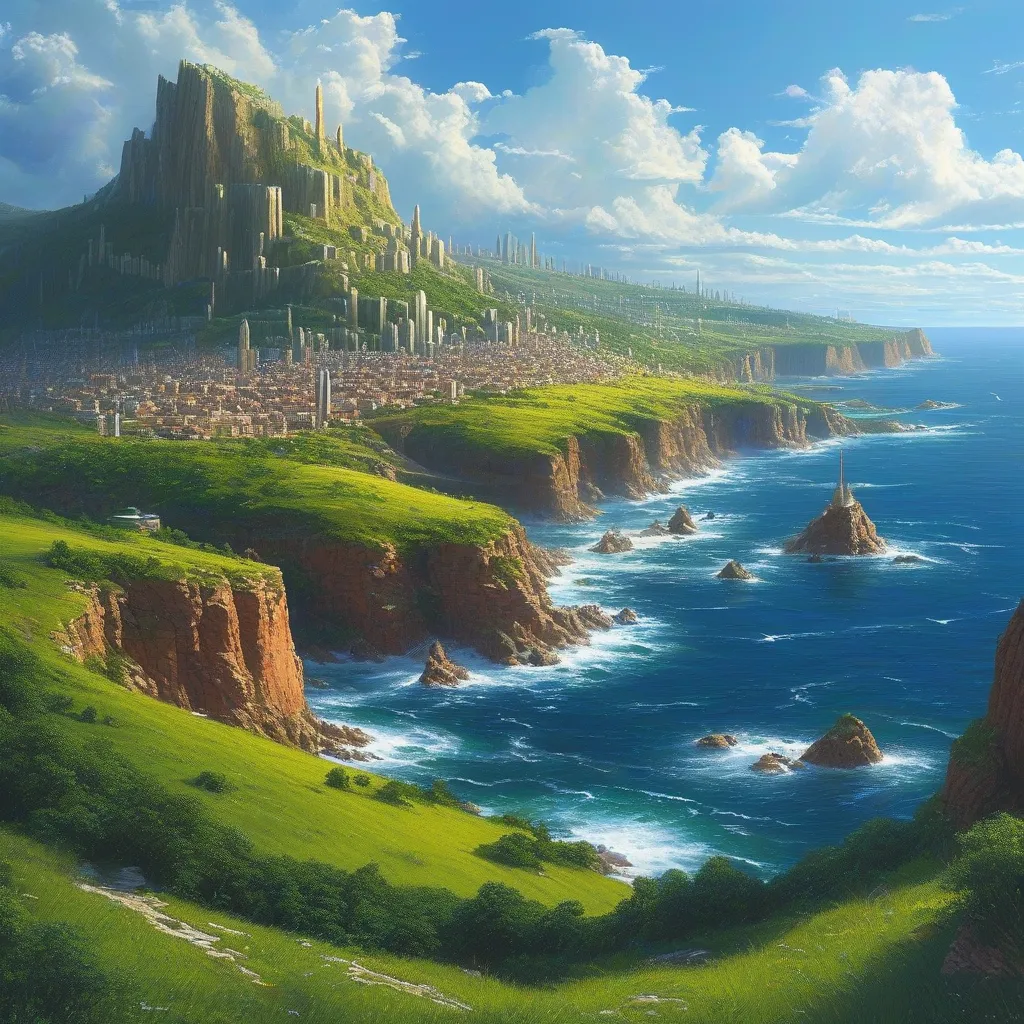Article Body Structure:
1. Introduction to "That Time I Got Reincarnated as a Slime"
- Overview of the anime’s premise and setting
- Brief introduction to the main storyline
- Mention of the series' origins and its adaptation from the light novel by Fuse
2. Main Plot and Story Arcs
- Detailed summary of major plot points and story arcs
- Description of key story arcs such as Rimuru's reincarnation, the formation of the Jura Tempest Federation, and the battles against various threats
- Key conflicts and challenges faced by Rimuru and his allies
3. Character Profiles and Development
- In-depth descriptions of key characters such as Rimuru Tempest, Shizu, Benimaru, and Milim
- Exploration of their backgrounds, motivations, and relationships
- Analysis of character growth and evolution throughout the series
4. Themes and Symbolism in "That Time I Got Reincarnated as a Slime"
- Discussion of major themes such as transformation, community building, and power dynamics
- Examination of how these themes are portrayed through character interactions and story arcs
- Analysis of the symbolism used in the series, such as Rimuru's abilities and the significance of names
5. Reception and Cultural Impact
- Summary of the series' reception by audiences and critics
- Discussion on the cultural impact of "That Time I Got Reincarnated as a Slime" and its contribution to the isekai genre
- Speculation on potential future seasons or adaptations based on current fan expectations and the storyline's progression
Introduction to "That Time I Got Reincarnated as a Slime"

"That Time I Got Reincarnated as a Slime" (also known as "Tensei Shitara Slime Datta Ken") offers a captivating blend of fantasy, adventure, and humor. The anime follows the story of Satoru Mikami, an ordinary 37-year-old office worker living a monotonous life in Tokyo. His life takes an unexpected turn when he is tragically killed by a random assailant. Instead of passing on, he finds himself reincarnated in a fantastical world as a lowly slime, one of the weakest creatures in many fantasy settings.
This new world is rich with magic, mystical creatures, and ancient secrets. As a slime, Satoru initially seems doomed to a mundane existence. However, he soon discovers that his new form comes with unique abilities, including the power to absorb and mimic the abilities of anything he devours. Adopting the name Rimuru Tempest, he embarks on a journey to explore this magical realm and make the most of his second chance at life.
The main storyline revolves around Rimuru's quest to create a peaceful and prosperous society for all races. His journey brings him into contact with a diverse cast of characters, including goblins, direwolves, dwarves, ogres, and even dragons. Rimuru's kind-hearted nature and strategic mind help him forge alliances and friendships, transforming his humble slime existence into one of great influence and power. Along the way, he faces numerous challenges and battles, each testing his resolve and expanding his abilities.
"That Time I Got Reincarnated as a Slime" originated as a light novel series written by Fuse and illustrated by Mitz Vah. The story quickly gained popularity, leading to its adaptation into a manga series and subsequently into an anime. The anime adaptation has been well-received for its engaging storytelling, vibrant animation, and the endearing character of Rimuru. The series' success is a testament to its unique take on the isekai genre, combining traditional fantasy elements with fresh, imaginative twists.
In summary, "That Time I Got Reincarnated as a Slime" captivates audiences with its intriguing premise and setting. The tale of Satoru Mikami's transformation into Rimuru Tempest offers a rich narrative filled with adventure, humor, and heartwarming moments. As Rimuru navigates his new life, viewers are treated to a fantastical journey that explores themes of friendship, leadership, and the pursuit of a better world. This anime stands out not only for its creative storyline but also for its ability to weave complex characters and relationships into a compelling tapestry of fantasy and adventure.
Main Plot and Story Arcs in "That Time I Got Reincarnated as a Slime"

"That Time I Got Reincarnated as a Slime" follows the journey of Satoru Mikami, a 37-year-old office worker who is reincarnated into a fantasy world as a powerful slime named Rimuru Tempest. The series blends action, adventure, and fantasy elements, creating an engaging narrative filled with unique characters and thrilling battles.
Detailed Summary of Major Plot Points and Story Arcs
Rimuru's Reincarnation: The story begins with Satoru Mikami's unexpected death and subsequent reincarnation as a slime in a fantasy world. As Rimuru Tempest, he discovers his new abilities, such as consuming other creatures to gain their powers and skills. This initial phase focuses on Rimuru's adaptation to his new form and the exploration of his surroundings. His encounter with the powerful Storm Dragon Veldora sets the stage for his future endeavors, as Rimuru promises to free Veldora from his prison.
Formation of the Jura Tempest Federation: Rimuru's journey leads him to establish the Jura Tempest Federation, a nation where various races coexist peacefully. This arc highlights Rimuru's diplomatic skills and his ability to unite different species, including goblins, dwarves, and lizardmen, under one banner. The formation of Tempest marks a significant milestone, transforming the region into a thriving and harmonious community. This phase also introduces key allies such as Benimaru, Shuna, and Shion, who become integral to Tempest's growth and defense.
Battles Against Various Threats: As Tempest flourishes, it attracts the attention of powerful adversaries. Rimuru and his allies face numerous challenges, from clashes with the Orc Lord and his army to confrontations with rival nations and formidable monsters. Each battle tests Rimuru's leadership and strategic acumen, showcasing his growth as a ruler and warrior. The conflict with the Orc Lord, in particular, is a pivotal moment, demonstrating Rimuru's ability to turn enemies into allies and expand his influence.
Key Conflicts and Challenges Faced by Rimuru and His Allies
Throughout the series, Rimuru and his allies encounter a series of escalating conflicts that push them to their limits. One of the most significant challenges is the attack by the Kingdom of Falmuth, which threatens the peace and stability of Tempest. Rimuru's response to this invasion involves strategic alliances and a display of his immense power, ultimately securing Tempest's safety.
Another critical conflict is the struggle against the demon lord Clayman, whose machinations pose a significant threat to Tempest and its allies. Rimuru's battle against Clayman and his forces is a testament to his growing strength and the unwavering loyalty of his companions. This arc culminates in Rimuru's ascension to demon lord status, marking a turning point in the series and solidifying his position as a major power in the fantasy world.
In addition to these external threats, Rimuru faces internal challenges, such as managing the diverse needs of Tempest's inhabitants and balancing his role as a leader with his personal relationships. His interactions with characters like Shizu, a hero from the real world, and Milim Nava, a powerful but unpredictable demon lord, add depth to his character and highlight the complexities of his responsibilities.
In summary, "That Time I Got Reincarnated as a Slime" weaves together various story arcs that depict Rimuru's transformation from a humble slime to a powerful leader. The formation of the Jura Tempest Federation, the battles against formidable foes, and the intricate web of alliances and conflicts create a rich and dynamic narrative. Rimuru's journey is marked by growth, both as a ruler and an individual, making the series a compelling exploration of leadership, friendship, and the pursuit of a better world.
Character Profiles and Development in "That Time I Got Reincarnated as a Slime"

"That Time I Got Reincarnated as a Slime" presents a fascinating array of characters, each with unique backgrounds, motivations, and evolving relationships. Central to the story are Rimuru Tempest, Shizu, Benimaru, and Milim, whose personal journeys drive the narrative forward.
Rimuru Tempest: Rimuru Tempest, the protagonist, begins his journey as a regular office worker who is reincarnated into a fantasy world as a slime. Rimuru's background is initially mundane, but his new life brings extraordinary adventures. Motivated by a desire to create a peaceful and inclusive society, Rimuru's relationships with other characters are central to his growth. His compassion and strategic thinking help him form alliances and friendships, leading to the establishment of the Jura Tempest Federation. Throughout the series, Rimuru evolves from a simple slime to a powerful and wise leader, showcasing remarkable character development.
Shizu: Shizu, also known as Shizue Izawa, is a human who was summoned to the fantasy world during World War II. Her tragic background, marked by suffering and a desire for revenge, contrasts with her kind-hearted nature. Shizu's motivation to confront her past and find peace drives her actions. Her relationship with Rimuru is deeply impactful; Rimuru promises to honor Shizu's wishes after her passing, integrating her spirit into his being. This bond profoundly influences Rimuru's development, as he inherits Shizu's sense of justice and empathy.
Benimaru: Benimaru is a formidable ogre who becomes one of Rimuru's most loyal and trusted allies. His background as a prince of the Ogre tribe is marked by a desire to protect his people and seek justice for the destruction of his village. Motivated by loyalty and honor, Benimaru's relationship with Rimuru evolves from initial mistrust to deep respect and camaraderie. Benimaru's growth is evident as he transitions from a vengeful warrior to a wise and strategic commander, playing a crucial role in Rimuru's growing nation.
Milim Nava: Milim Nava, one of the oldest and most powerful Demon Lords, brings a unique dynamic to the series. Her background as a lonely and misunderstood being contrasts with her playful and seemingly carefree personality. Milim's motivation to find genuine companionship leads her to form an unlikely friendship with Rimuru. Their relationship is characterized by mutual respect and understanding, despite Milim's overwhelming power. Throughout the series, Milim's character evolves as she learns the value of trust and loyalty, influenced by her interactions with Rimuru and his allies.
Throughout "That Time I Got Reincarnated as a Slime," these characters face significant conflicts and challenges that shape their growth and relationships. Rimuru's quest to build a harmonious society brings him closer to Shizu, Benimaru, and Milim, forming a network of interconnected destinies. The evolving dynamics between these characters highlight themes of friendship, loyalty, and the pursuit of a better world, enriching the narrative with emotional depth and complexity.
In summary, "That Time I Got Reincarnated as a Slime" offers a rich tapestry of character development, with Rimuru, Shizu, Benimaru, and Milim at its core. Their backgrounds, motivations, and relationships drive the story forward, creating a compelling blend of fantasy, adventure, and personal growth. As they navigate through personal and collective challenges, viewers witness their growth and the profound impact of their interconnected fates.
Themes and Symbolism in "That Time I Got Reincarnated as a Slime"

"That Time I Got Reincarnated as a Slime" weaves a rich tapestry of themes and symbolism, making it a standout in the isekai genre. Central to the narrative are themes of transformation, community building, and power dynamics, all portrayed through intricate character interactions and story arcs.
Transformation: The theme of transformation is pivotal, starting with the protagonist, Rimuru Tempest, who begins life anew as a slime after being reincarnated from his human form. This transformation symbolizes rebirth and the limitless potential for growth and change. Rimuru's abilities, which evolve significantly throughout the series, highlight the fluidity of identity and the constant state of becoming. His ability to absorb and assimilate powers from his adversaries underscores the idea that transformation is not just about physical change but also about acquiring knowledge and experiences.
Community Building: Community building is another crucial theme. Rimuru's journey is not just about his personal growth but also about creating a harmonious and thriving community. He establishes a society where diverse races and beings coexist peacefully, reflecting ideals of unity and collaboration. This theme is portrayed through the construction of the Jura Tempest Federation, where Rimuru's leadership brings together monsters, humans, and other beings. The series emphasizes the importance of inclusivity and mutual respect, showing how a strong community can overcome challenges and prosper.
Power Dynamics: Power dynamics play a significant role in the narrative, exploring how power is acquired, utilized, and shared. Rimuru's rise to power is marked by strategic alliances, battles, and the wise distribution of his abilities among his followers. The series delves into the complexities of leadership and the responsibilities that come with great power. Through Rimuru's interactions with other powerful entities, the story examines different leadership styles and the ethical implications of wielding power.
Symbolism: The series employs various symbols to enhance its storytelling. Rimuru's abilities, such as his power to devour and mimic other beings, symbolize adaptability and the accumulation of wisdom. These abilities also highlight the theme of unity, as Rimuru integrates the strengths of others into himself, reflecting the broader narrative of building a diverse and powerful community.
Another significant symbol is the act of naming. In the world of "That Time I Got Reincarnated as a Slime," names hold profound power. When Rimuru names a creature, it gains new strength and a sense of identity, underscoring the theme of transformation. This act of naming also signifies Rimuru's role as a benevolent leader who bestows purpose and direction to his followers.
The series also uses the physical environment as a symbol. The transformation of the Great Forest of Jura into a bustling federation represents the transition from chaos to order and from isolation to community. This environmental change mirrors the internal transformations of the characters and the broader societal shifts they bring about.
Character Interactions and Story Arcs: Character interactions are central to portraying these themes. Rimuru's relationships with his subordinates, allies, and even enemies provide a nuanced exploration of trust, loyalty, and diplomacy. Key story arcs, such as the conflict with the Orc Disaster and the formation of alliances with other nations, highlight the challenges and rewards of community building and the strategic use of power.
In conclusion, "That Time I Got Reincarnated as a Slime" masterfully blends themes of transformation, community building, and power dynamics with rich symbolism. Rimuru's journey from a lowly slime to a revered leader embodies the potential for growth and the importance of unity. Through its compelling narrative and intricate character dynamics, the series offers a profound commentary on the nature of identity, leadership, and the power of community.
Reception and Cultural Impact of "That Time I Got Reincarnated as a Slime"

"That Time I Got Reincarnated as a Slime" has garnered significant acclaim from both audiences and critics since its debut. The series, based on the light novel by Fuse, has captivated viewers with its unique premise and engaging storytelling. Audiences have praised its blend of humor, action, and fantasy elements, while critics have highlighted its fresh take on the isekai genre.
The anime's reception has been overwhelmingly positive, with high ratings across various platforms and a dedicated fan base that continues to grow. Viewers appreciate the protagonist Rimuru Tempest's journey from a mundane human to a powerful slime with the ability to shape the world around him. The character's development and the intricate world-building have been standout aspects, contributing to the series' popularity.
Culturally, "That Time I Got Reincarnated as a Slime" has made a significant impact on the isekai genre. It has introduced a refreshing perspective by subverting traditional tropes and focusing on a protagonist who uses diplomacy and intelligence rather than sheer strength to achieve goals. This approach has resonated with fans and has set a new standard for storytelling within the genre.
The series' influence extends beyond its narrative. It has inspired a range of merchandise, spin-off manga, and even a mobile game, indicating its broad appeal and marketability. The anime's success has also sparked discussions about the potential for future adaptations and expansions of the storyline.
Given the current fan expectations and the progression of the storyline, there is considerable speculation about future seasons or adaptations. Fans are eager to see more of Rimuru's adventures and the further development of the world and its inhabitants. The existing material from the light novels provides ample content for additional seasons, and the ongoing popularity suggests that future adaptations are likely.
In conclusion, "That Time I Got Reincarnated as a Slime" has achieved a remarkable reception from audiences and critics, contributing significantly to the isekai genre. Its unique take on traditional tropes, combined with engaging characters and rich world-building, has ensured its place as a beloved series. With the potential for more seasons and adaptations, the series is poised to continue its cultural impact and entertain fans for years to come.
-
Moontsukki is a commentator full of anime love, and is like a "moonlight'" in the anime industry. She has been passionate about anime history, trends, and character analysis for over 20 years. In particular, his unique perspective, which delves deeply into the connections between anime and culture, is supported by many fans. Moontsukki's commentary will appeal to a wide range of readers, from anime novices to avid fans.
View all posts
-
Fujiyama Monroe is a unique supervisor known as an "entertainment ambassador" in the anime world. Her commentary is characterized by a storytelling style that mixes the deep themes of anime works with humor. She has a "wide field of view like Mt. Fuji" and "a gorgeousness like Monroe," and explains the background of the work and the feelings of the characters in an easy-to-understand manner. It has a charm that makes readers want to know more.
View all posts
-
Otamagena, as the name suggests, is an anime critic who delivers surprise and fun. He is a master at unraveling anime works from a "surprising perspective" and discovering new charms. She provides an easy-to-understand introduction to the behind-the-scenes settings and behind-the-scenes stories behind the anime's production, and provides tips to help you enjoy the characters and story more deeply. Her commentary with her unique sensitivity is sure to give anime fans a new perspective.
View all posts
-
HoriHori Celebrity is a "digger" of anime and pop culture. We delve deeply into the worldview and social messages depicted in anime, and approach a wide range of people with our expert knowledge and light speaking style. Her commentary is characterized by a cross-section of domestic and international works, adding a global perspective. With content that can be enjoyed by both anime beginners and experts, he is an expert at suggesting to readers the "anime they want to watch next."
View all posts









